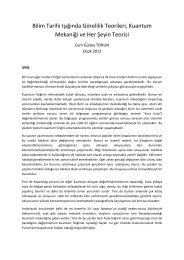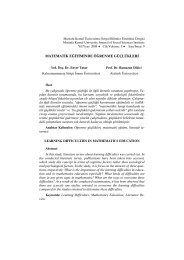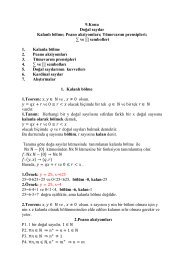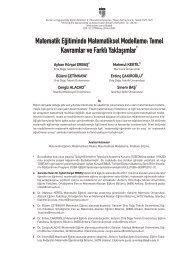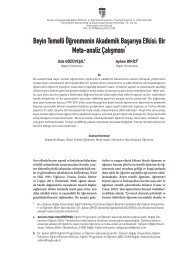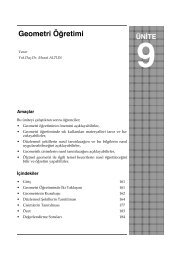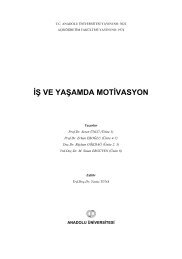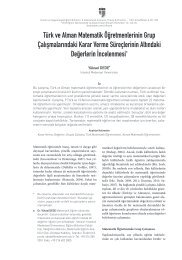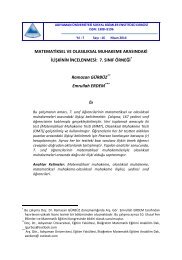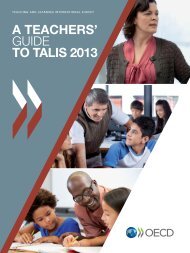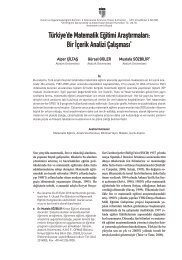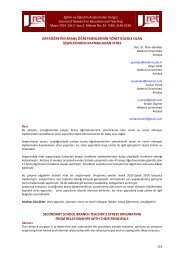Ufuk-U_niversitesi-SBE-Dergisi-S-ayı-5-kopya
Ufuk-U_niversitesi-SBE-Dergisi-S-ayı-5-kopya
Ufuk-U_niversitesi-SBE-Dergisi-S-ayı-5-kopya
You also want an ePaper? Increase the reach of your titles
YUMPU automatically turns print PDFs into web optimized ePapers that Google loves.
effect of compensation strategies (t (68) = .194, p > .05) (see Table 3). The variables with asignificant difference were re-examined. It revealed that multilinguals gained a higher SILLscore (M = 182.52; SD = 20.592) than the bilingual participants (M = 170.27; SD = 24.318).Apart from the SILL score, the multilingual participants scored higher in the direct strategies(multilinguals: M = 106.41; SD = 12.111; bilinguals: M = 97.27; SD = 13.849); memorystrategies (multilinguals: M = 33.07; SD = 4.463; bilinguals: M = 27.71; SD = 4.606) andcognitive strategies (multilinguals: M = 51.10; SD = 7.355; bilinguals: M = 47.51; SD =7.507) which lead to significance.Table 3. Independent-Samples T-Test results for Languages known on the SILL and constructst df Sig. (2-tailed)SILL score 2.209 68 .031Direct strategies 2.864 68 .006Indirect strategies 1.124 68 .265Memory strategies 4.859 68 .000Cognitive strategies 1.988 68 .051Compensation strategies .194 68 .847Metacognitive strategies .742 68 .460Affective strategies 1.614 68 .111Social strategies .348 68 .729The T-test analysis conducted to analyze the effect of the instructor’s native languageon the language learning strategies showed a significant difference for the affective strategies(t (68) = 2.091, p < .05) (Turkish instructor: M = 3.32; SD = .932; Spanish instructor: M =3.76; SD = .818). When analyzed individually, the effect of the instructor for the affectivestrategies was found to be significant for the bilingual participants (t (39) = 2.444, p < .05)(Turkish instructor: M = 3.02; SD = .883; Spanish instructor: M = 3.68; SD = .810), but notfor the multilingual participants (t (27) = .934, p > .05).4. DiscussionThe goal of this study was to investigate the impact of the number of languages knownand the native language of instructors on the use of language learning strategies. The findingssuggest that multilingualism is a factor affecting the dependent variable of language learningstrategies thus being in accordance with previous studies (Kemp, 2007; Psaltou-Joycey andKantaridou, 2009). Several studies have affirmed that multilingual individuals make use of a67





